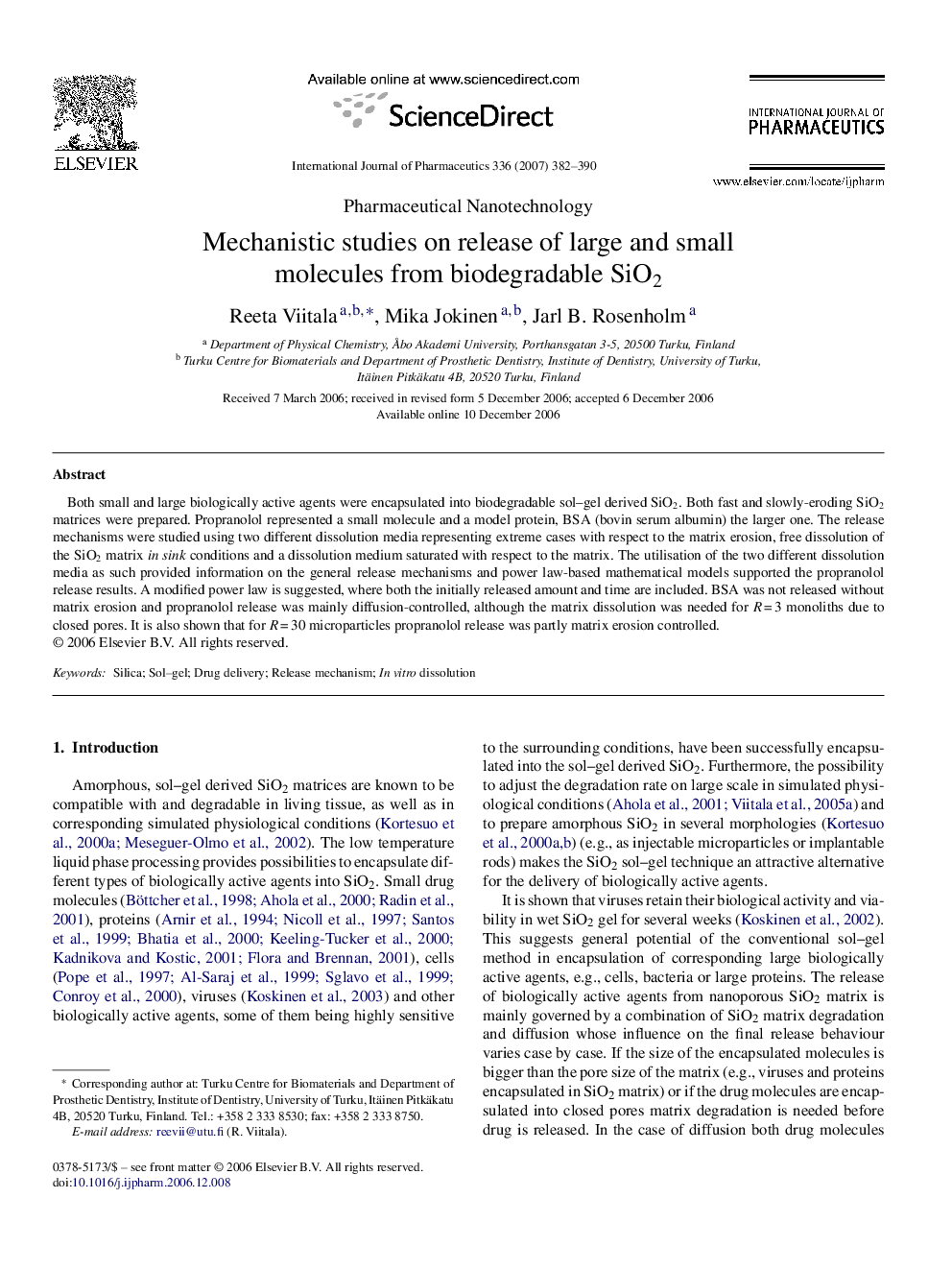| Article ID | Journal | Published Year | Pages | File Type |
|---|---|---|---|---|
| 2506138 | International Journal of Pharmaceutics | 2007 | 9 Pages |
Both small and large biologically active agents were encapsulated into biodegradable sol–gel derived SiO2. Both fast and slowly-eroding SiO2 matrices were prepared. Propranolol represented a small molecule and a model protein, BSA (bovin serum albumin) the larger one. The release mechanisms were studied using two different dissolution media representing extreme cases with respect to the matrix erosion, free dissolution of the SiO2 matrix in sink conditions and a dissolution medium saturated with respect to the matrix. The utilisation of the two different dissolution media as such provided information on the general release mechanisms and power law-based mathematical models supported the propranolol release results. A modified power law is suggested, where both the initially released amount and time are included. BSA was not released without matrix erosion and propranolol release was mainly diffusion-controlled, although the matrix dissolution was needed for R = 3 monoliths due to closed pores. It is also shown that for R = 30 microparticles propranolol release was partly matrix erosion controlled.
